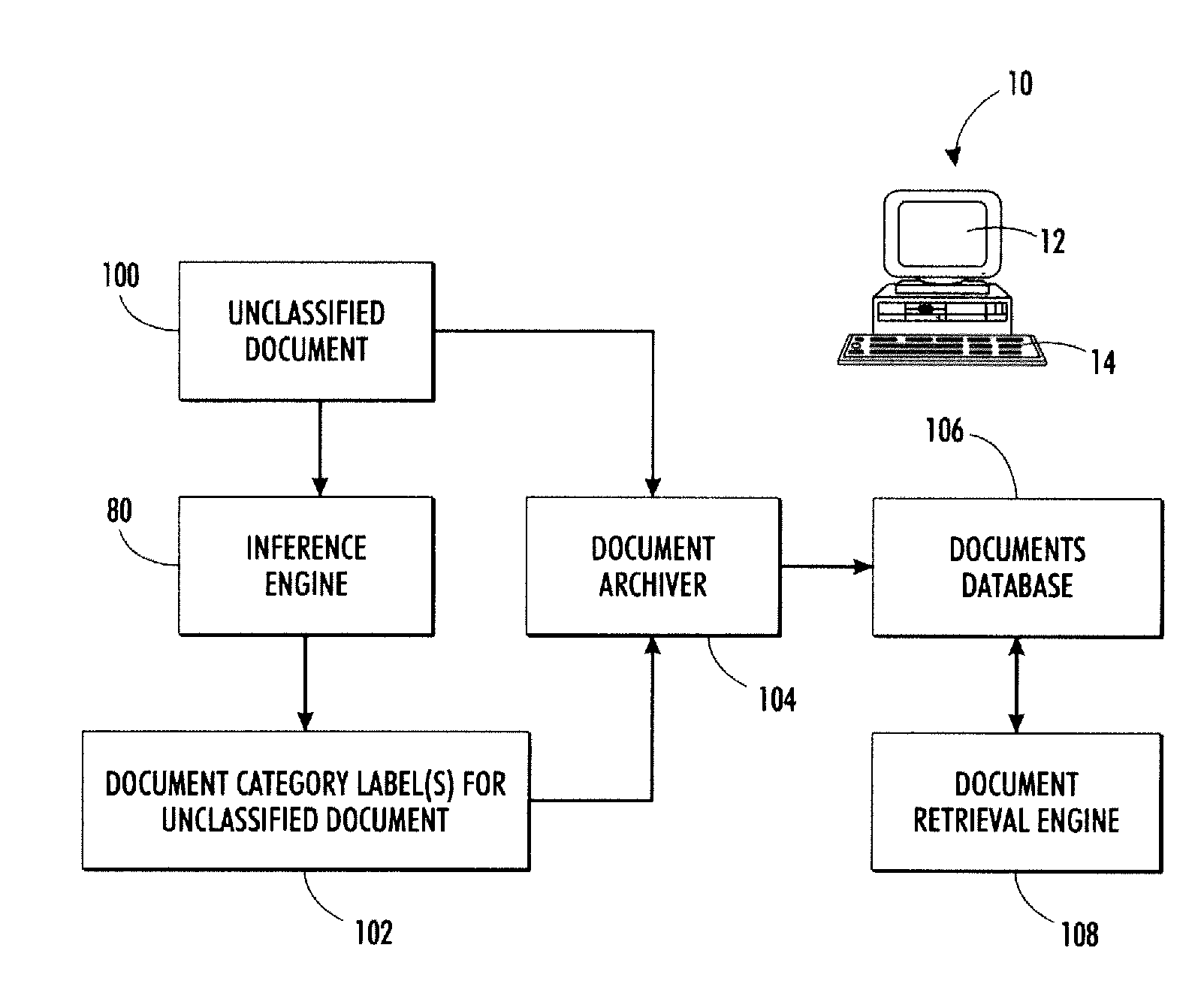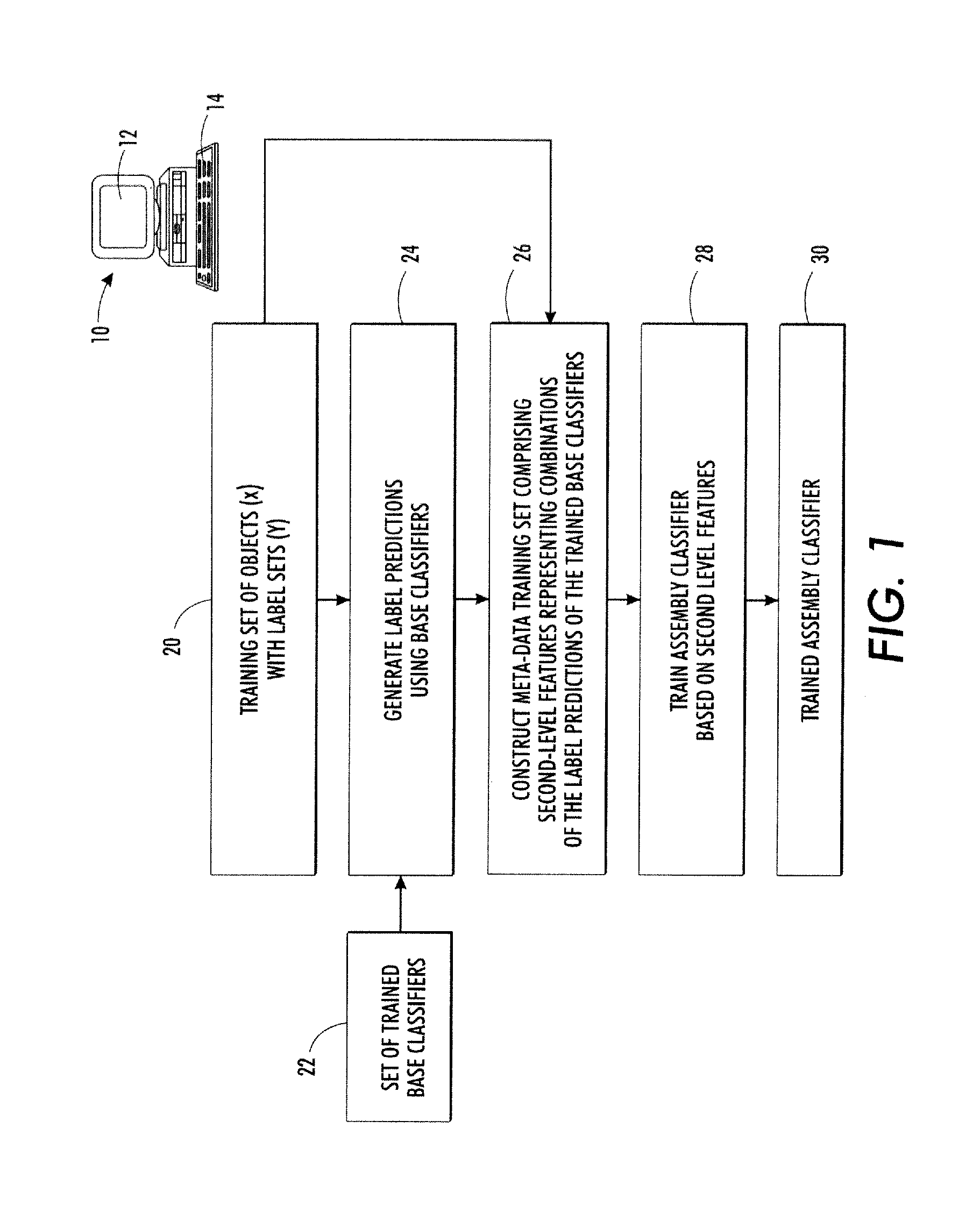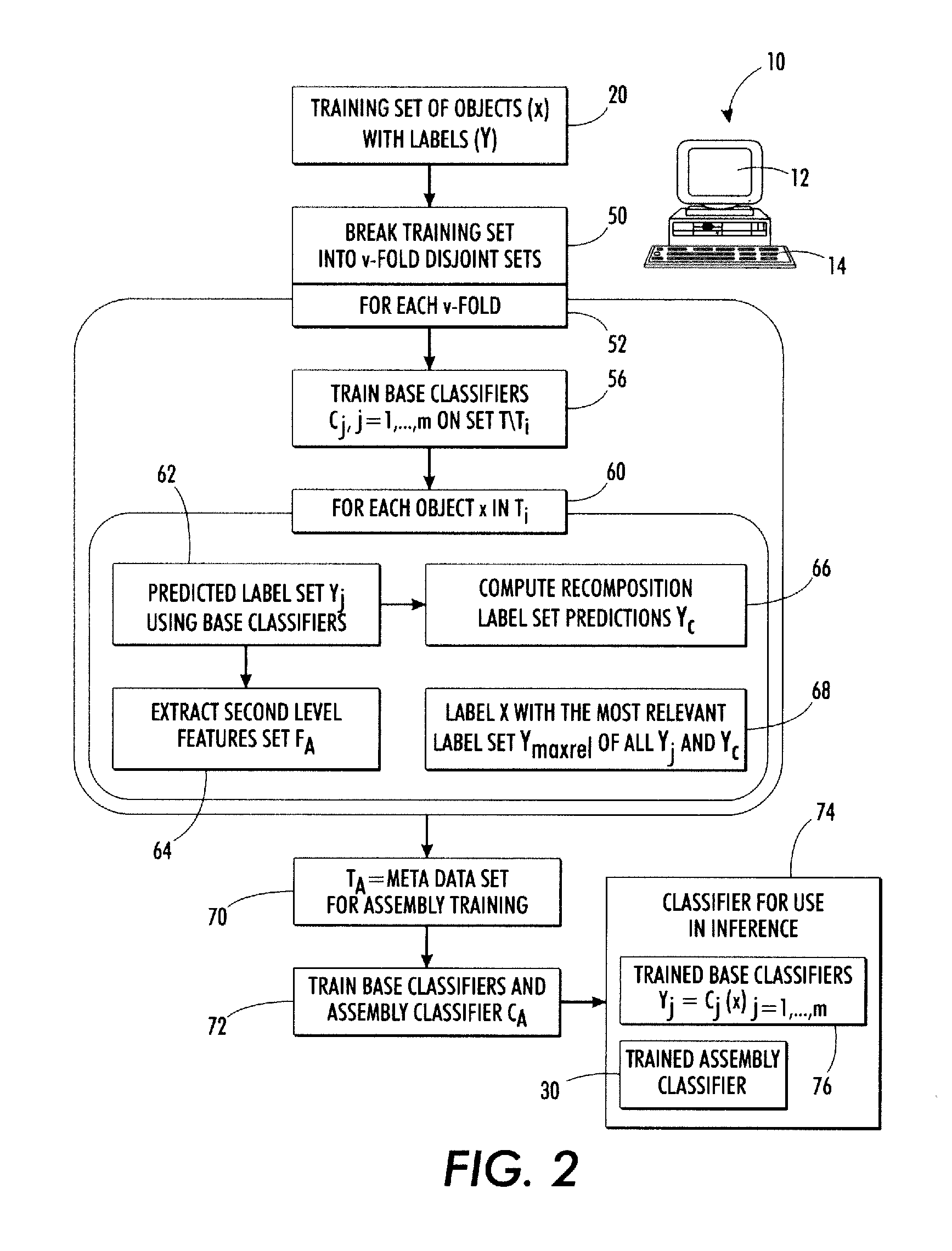Multi-label classification using a learned combination of base classifiers
a classifier and multi-label technology, applied in the field of multi-label classification arts, document archiving and retrieval arts, database arts, can solve the problems of information loss, complex learning and inference, and inability to generalize,
- Summary
- Abstract
- Description
- Claims
- Application Information
AI Technical Summary
Benefits of technology
Problems solved by technology
Method used
Image
Examples
Embodiment Construction
[0024]It is recognized herein that one difficulty in constructing effective multi-label classifiers is that the classifier should be broadly applicable across the set of labels. Achieving this is difficult. For example, some portion of the labels may be uncorrelated, and hence would be best accommodated by a technique such as one-against-all that employs an independence assumption. On the other hand, some portion of the labels may be correlated (which, as used henceforth herein, also encompasses anti-correlations), and would best be accommodated by a technique such as CML or latent Y that is designed to account for correlations. It is recognized herein that no single multi-label classifier is likely to effectively accommodate labeling respective to labels and label combinations spanning the spectrum from independent to strongly correlated.
[0025]It is further recognized herein that a multi-label classification system may evolve over time by the addition of new labels. Thus, it would ...
PUM
 Login to View More
Login to View More Abstract
Description
Claims
Application Information
 Login to View More
Login to View More - R&D
- Intellectual Property
- Life Sciences
- Materials
- Tech Scout
- Unparalleled Data Quality
- Higher Quality Content
- 60% Fewer Hallucinations
Browse by: Latest US Patents, China's latest patents, Technical Efficacy Thesaurus, Application Domain, Technology Topic, Popular Technical Reports.
© 2025 PatSnap. All rights reserved.Legal|Privacy policy|Modern Slavery Act Transparency Statement|Sitemap|About US| Contact US: help@patsnap.com



